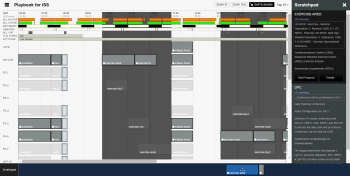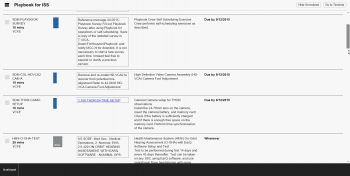An astronaut’s timeline in space is a constant shuffling and reshuffling of experiments, events and plans. Dedicated teams at ground control are always looking to squeeze an extra experiment in the schedule or rearranging plans to optimise the time astronauts stay on the Space Station.
The astronauts on the International Space Station and ground control use a network-connected schedule planner called OSTPV an acronym for Onboard Short-Term Planner View. This is where an astronaut in space will look to see what to do next, keep on track and also find notes about an experiment or task at hand.
Many tasks have specific constraints, for example you cannot schedule a live call during the periodic loss of signal where communication is not possible. Some experiments such as growing crystals require as little vibration as possible that would interfere with the results – so no running on the Station’s treadmill when the crystals are growing. The OSTPV does a great job at showing these constraints but rescheduling is left to dedicated teams on Earth that know the ins and outs of each experiment.
This system works because ground control is in constant communication with the International Space Station either on the radio or through a satellite-driven computer network. When humans venture further afield in our Solar System it will become progressively harder to schedule an astronauts time on Earth as communication delays become greater – it can take 14 minutes for example for a signal from Earth to reach Mars, and 14 minutes for a reply to come back.
To prepare for this problem NASA has been developing a more advanced, interactive planning viewer that Andreas is set to test in space. Amazingly the system has a name that is not an acronym, instead the engineers chose the pleasing-sounding “Playbook”.
Playbook runs from a web browser and allows a drag and drop interface for an astronaut to move scheduled tasks around with freedom. If they finish early or are running late, they could decide to move an activity to spend more time finishing the experiment at hand and do the next task later. With Playbook, rescheduling is as easy as dragging the task to another area. The system will show any constraints to help the scheduling.
Watch below as NASA’s Stephen Gibson, Playbook project representative at ESA’s mission control, demonstrates the basic functionality:




Discussion: no comments